In the fast-paced world of project management, pipeline templates are the unsung heroes that keep chaos at bay. Imagine trying to navigate a maze blindfolded—frustrating, right? That’s what managing workflows without a solid template feels like. These handy tools streamline processes, ensuring tasks flow smoothly from start to finish, saving time and sanity along the way.
Table of Contents
ToggleOverview of Pipeline Templates
Pipeline templates serve as essential frameworks in project management. These templates provide structured workflows, ensuring consistent and efficient processes. By outlining specific tasks and phases, they eliminate ambiguity. This clarity helps project managers and teams maintain focus on deliverables.
Various types of pipeline templates exist to address different project needs. For instance, marketing teams might employ templates tailored for campaign management, while software development teams may choose templates focusing on agile sprints. Each type enhances collaboration among team members.
Utilizing a pipeline template often leads to time savings. With predefined steps, team members can swiftly transition from one task to another. Reduced friction in workflows diminishes the risk of delays and miscommunication, fostering a smoother project journey.
Another advantage of pipeline templates lies in their adaptability. Organizations can modify these templates to suit unique project requirements. This customization feature allows teams to scale their processes seamlessly.
Moreover, pipeline templates provide performance metrics, enabling teams to track progress effectively. By establishing key performance indicators (KPIs), managers can quickly identify bottlenecks or areas for improvement. Regular assessments foster continuous improvement and drive projects toward successful outcomes.
Employing pipeline templates simplifies project management routines, making them more predictable. As teams become familiar with the structure, they can focus their efforts on innovation rather than repetitive tasks. Thus, these templates play a vital role in enhancing productivity and project success rates.
Benefits of Using Pipeline Templates
Pipeline templates offer significant advantages in project management. Streamlined workflows and enhanced collaboration stand out as essential benefits.
Streamlining Workflow
Streamlining workflows occurs through predefined steps in pipeline templates. Every phase becomes clear, reducing confusion about task responsibilities. Teams can transition smoothly between phases, minimizing idle time. Project managers can quickly adjust to changes, ensuring flexibility in dynamic environments. Clear task outlines help maintain focus on essential deliverables as teams progress. Overall, efficiency improves, allowing projects to advance without unnecessary delays.
Enhancing Collaboration
Enhancing collaboration happens when teams use pipeline templates effectively. Defined roles and responsibilities foster accountability among members. Clear communication channels arise from established frameworks, ensuring everyone stays informed. Regular updates within the template keep all team members on the same page, reducing miscommunication. Flexible design allows teams to tailor templates based on unique project needs. Ultimately, enhanced collaboration boosts team morale and project success rates.
Types of Pipeline Templates
Pipeline templates can be categorized into distinct types, each tailored to meet specific project needs. Understanding these categories helps organizations select the right template for their workflows.
Standard Pipeline Templates
Standard pipeline templates offer predefined structures suitable for common project types. They include established phases and tasks designed to optimize efficiency across various industries. Usability is a key feature, as these templates allow teams to implement best practices quickly. Many project managers find that standard templates save time on setup, enabling faster project initiation. These templates typically encompass essential elements like task assignments, timelines, and milestone tracking, ensuring clarity and coherence in project execution.
Customizable Pipeline Templates
Customizable pipeline templates provide flexibility to adapt workflows according to unique project requirements. Organizations can modify these templates by adding or removing tasks, adjusting timelines, and aligning phases with specific project goals. This adaptability ensures that teams can address complexities specific to their projects effectively. Customizable templates often integrate feedback mechanisms, allowing for continuous improvements based on team performance. As a result, organizations benefit from enhanced collaboration, as team members can engage in reshaping processes that suit their workflow preferences.
Best Practices for Implementing Pipeline Templates
Implementing pipeline templates effectively requires attention to detail and strategic planning. Identify project goals before selecting or customizing a template. Clear objectives shape the template’s structure and content, guiding team efforts toward successful outcomes.
Specify key milestones within the template. Milestones help track progress and ensure that teams focus on deliverables, keeping projects on schedule. Utilize standardized tasks to minimize confusion about responsibilities. When team members understand their roles, collaboration improves and tasks flow smoothly.
Incorporate feedback mechanisms into pipeline templates. Regularly updating templates based on team input fosters an environment of continuous improvement. Create channels for team members to share their experiences, allowing templates to evolve and better serve the project’s needs.
Track performance metrics to gauge the effectiveness of the pipeline templates. Evaluating success indicators offers insights into how well the team follows the template and highlights areas for enhancement. Apply these insights to adjust and refine templates as necessary.
Ensure flexibility within the templates. While structure is crucial, allowing for customization enables teams to adapt to unique project circumstances. This adaptability supports collaboration, leading teams to engage actively in adjusting workflows.
Promote training for team members on using pipeline templates. Even the best templates require understanding and familiarity to maximize their benefits. Clear training sessions prepare team members, ensuring they can navigate the templates fluidly and effectively contribute to project goals.
Review the implementation regularly. Scheduled evaluations help assess whether the templates meet project demands and team expectations. Proactive revisions based on these reviews maintain template relevance and efficacy.
Conclusion
Pipeline templates are vital tools that significantly enhance project management efficiency. By providing structured workflows and clear task definitions, they eliminate confusion and foster better collaboration among team members. Their adaptability ensures that organizations can tailor templates to meet specific project needs, promoting flexibility in ever-changing environments.
The benefits of using pipeline templates extend beyond mere organization. They streamline processes, reduce idle time, and facilitate swift task transitions. As teams embrace these templates, they not only improve their workflows but also increase their chances of project success. Implementing best practices in using these templates can lead to continuous improvement and sustained effectiveness, making them an indispensable asset in any project manager’s toolkit.







